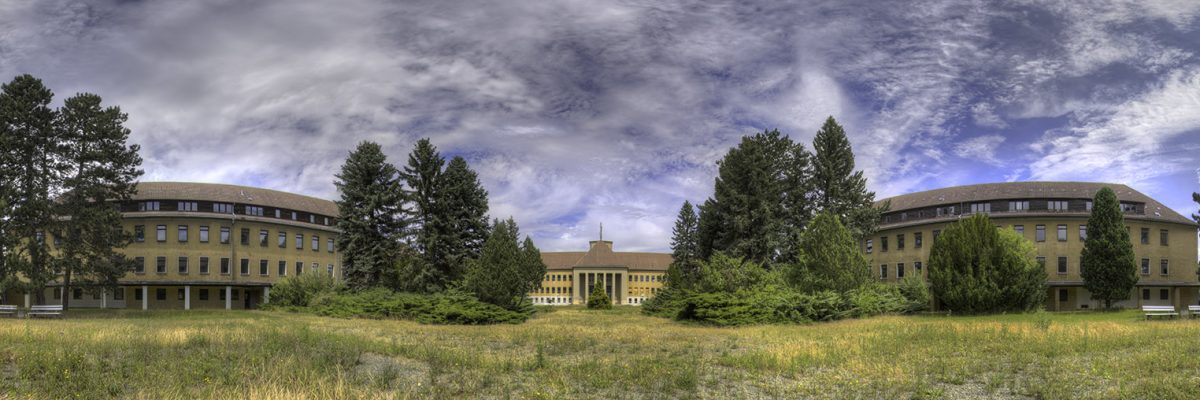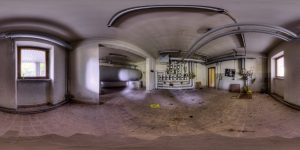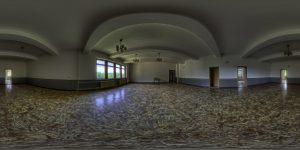The next three images are from buildings 3 and 4. At least the upper floors were used as living rooms for the pupils. Most rooms were identical, empty and boring. So I didn’t take many photos in these buildings.
Like in part 1 all three panoramas are available in two styles. One is more natural while the other is the typical HDR look which has nothing to do with HDR in the first place. I overdid this compared with the two images of part 1 because for these two the effect almost disappeared when looking at the reduced resolution on the website.
All images have in common that I don’t like the sky. It’s completely unnatural. I have serious trouble to get a natural looking sky with Photomatix. That’s something I have to work on for sure.
The steps are identical to before:
- Merge each 7 different exposures to a single HDR and a default tonemapped LDR version
- Stitch the LDRs to a single panorama with Autopano
- Use a text editor to modify the Autopano configuration file from LDR (jpg) to HDR (exr) to create a true HDR panorama
- Remove the tripod in Photoshop. That’s only possible with an older version of PS because the current version (CC 2017) and the one before that have a 32 bit mode that is even more crippled than before
- Tonemap with Photomatix using the presets “Vibrant” and “Painterly 3” as baseline
- Finishing touch with Photoshop and Topas filters (Denoise, Detail, Glow). The final PSB file has about 6 GB for about 112.5 megapixel
- Export as JPG with the resolution reduced to 25%
All these steps are only necessary because it’s possible to use the OpenEXR files for image based illumination and reflections in 3D applications like Blender or Cinema 4D. I’m still working on optimizing my workflow to get the desired quality for these images. At first, I didn’t even wanted to create LDRs from the HDRs but then it was somewhat natural to go that route. If the HDR panorama is not required the steps are significantly easier…
Btw: the EXR files are only about 300 MB each. I can provide them on request for non-commercial use. Commercial use is not allowed by go2know.
Update 2017-Jan-21: Updated metadata of image files to include information about licence CC BY-NC 4.0







